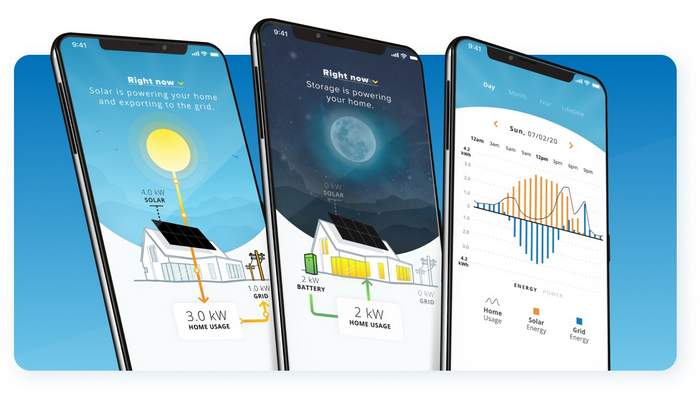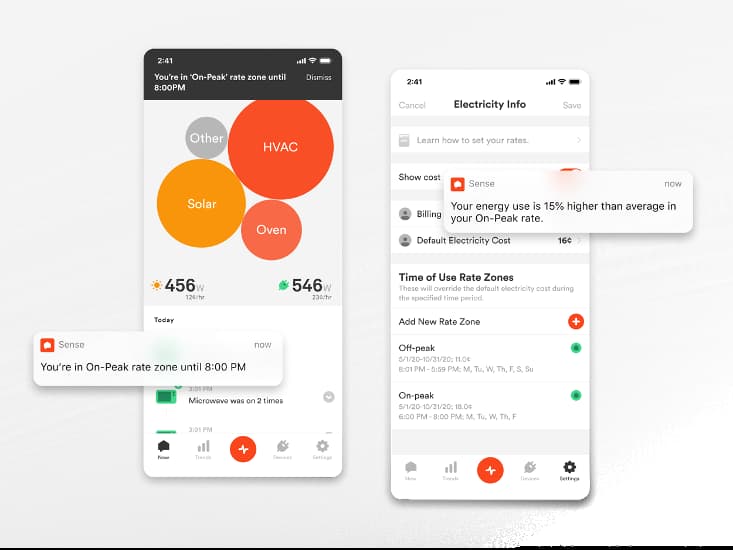Installing a ton of residential solar doesn’t just “distribute” generation, it distributes the responsibility for managing that generation, and we are just starting to scratch the surface of products and strategies for doing so. These range from customer apps that (try to) change each user’s relationship with their home’s energy to virtual power plants that aggregate homes to centralize DG decision-making. Here’s the latest news on this front.
SunPower improves app
In its quest to become more of a service-based DG solar brand, SunPower Corp. debuted the new mySunPower app for homeowners to review and manage their energy generation, consumption, and battery storage settings from a mobile device. The new mySunPower app for monitoring will be available for download for SunPower Equinox customers on Feb. 16 on the Apple App Store and Google Play and will be available to all of SunPower’s 285,000 monitoring customers by spring 2021. Launch features include:
- Storage system controls: mySunPower users can control their battery, setting it to minimize energy costs, lower their carbon footprint, or preserve maximum resilience in the event of unforeseen power outages.
- Live power flow: With live data, Equinox customers with production meters can view the immediate impact of their energy choices, including the effects of changing weather conditions, adjustments in battery settings, or even the use of small appliances such as a microwave in real time.
- In-app alerts: New notification features alert homeowners to important changes to their system status, connectivity, and weather conditions. Additional app features expected to be released later in 2021 include alerts for homeowners to prepare for rolling blackouts and other disruptions.
Sense adds TOU functionality
The Sense Home Energy Monitor and app, among the most common solutions, has been updated to help customers manage utility plans with time of use (TOU) rates that vary daily and seasonally. The Time of Use feature notifies users when utility rates change during the day, helping them budget and control utility costs. Alerts also notify users if they exceed their average usage during peak rate periods.
With these alerts, Sense users can schedule their day-to-day activities and household chores during the lowest-cost rate periods. For instance, the Sense app alerts when an On-peak rate begins and tells you when it will end. Instead of running a dishwasher, charging an electric vehicle or washing a load of laundry during those peak rate times, the Sense user can wait for their alert about Off-peak rates and run their appliances when pricing is lower.
The new feature also helps utility customers figure out which rate plan fits their lifestyle and budget by entering their utility’s varying rates into the Sense app to see how those rates would impact billing based on their home’s historical energy usage. Users can run multiple rate scenarios to help them choose the best plan. In summary, the Sense app now:
- Alerts when a new time of use rate period starts
- Notifications when more electricity than normal is used during a peak rate zone
- More accurate billing estimates for Sense users who have a time of use plan
- The ability to compare time of use rate plans in order to determine which would work best.
David Energy raises $19M to manage home devices, sell into electric markets
And there’s this approach from David Energy, pitching itself as a new kind of electricity supplier. This company closed $19 million in new financing this week, and its goal is to integrate with devices in customer homes and buildings such as battery storage, EV chargers, smart thermostats, solar, and more, and then leverage those devices directly into electricity markets. Its software platform, Mycor, analyzes and controls customer demand in real-time. By leveraging building data, demand-side software, and the assets the building has at its disposal, Mycor can intelligently shift user consumption to the times when renewable power is most available, and cheapest.
Key here is the $15 million of the working capital facility via Hartree Partners, a global merchant commodities firm specializing in energy. By working with Hartree, David Energy is fusing traditional commodity buying with their advanced technology platform. The partnership is a critical gateway for David Energy to transact in energy markets, providing their balance sheet for working capital to purchase energy on behalf of David Energy’s customers.
David Energy would be able to buy and deliver power to customers far cheaper and more efficiently than incumbent providers, and do so with total transparency. Co-founders James McGinniss, Brian Maxwell, and Ahmed Salman founded David Energy in 2019. The trio are joined by two new hires, Head of Retail Chaitu Parikh, former COO at Crius Energy, and Vice President of Supply Abhi Mandhana, former Director of Portfolio Optimization at EDF Energy North America.
“We intend to build the Standard Oil of renewable energy, and the first step of vertical-integration is becoming a supplier,” McGinniss said. “Renewable energy generators are fundamentally different in their variable, distributed, and digitally-native nature compared to their fossil fuel predecessors while customer loads like heating and driving are shifting to electricity consumption from gas. The sands of market power are shifting and incumbents are poorly-positioned to adapt to evolving customer needs, so there’s a massive opportunity for us to capitalize.”
David Energy plans to use the additional financing to bring its offering to the Northeast markets and rapidly expand its customer footprint.
And if you missed it, Span now integrates with Alexa
Span launched and started shipping its smart electrical panel last year – a reinvention of an old, basic concept to better serve today’s connected, electrified, renewably powered homes. At the end of January, they added another $20 million in funding led by Munich Re Ventures’ HSB Fund and joined by Amazon’s Alexa Fund (with continued participation from existing investors). This strategic investment will help further expand Span Smart Panel reach to homeowners and develop new product offerings, and it coincides with Span’s latest update: Voice integration with Amazon’s Alexa. Here’s the full story on that one.
— Solar Builder magazine



Leave a Reply
You must be logged in to post a comment.